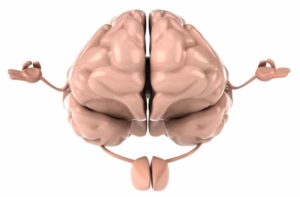Brain Structures Involved in Memory are Different in Yoga Practitioners
By John M. de Castro, Ph.D.
“You may know that yoga is a good form of exercise that gets your blood circulation going, improves oxygen flow, and helps with overall health. But did you know that yoga also helps boost brain function? Research has found that regular practice of yoga increases gray matter and the size of the memory centers in the brain, increases overall brain wave activity and improves cognition, improves mood, relieves depression and anxiety, and improves stress response, and enhances focus and memory in kids (even with ADHD) and improves learning and academic performance.” Curejoy
The practice of yoga has many benefits for the individual’s physical and psychological health. Yoga has diverse effects because it is itself diverse having components of exercise, mindfulness meditation, and spirituality. So, yoga nourishes the body, mind, and spirit. As a result, yoga practice would be expected to produce physical changes. These include the relaxation response and stress relief. These should be obvious in the muscles, tendons and joints, but, less obvious in the nervous system. The nervous system changes in response to how it is used and how it is stimulated in a process called neuroplasticity. Highly used areas grow in size and connectivity. Mindfulness practices in general are known to produce these kinds of changes in the structure and activity of the brain. Indeed, yoga practice has been shown to protect the brain from age related degeneration.
In today’s Research News article “Differences in Brain Structure and Function Among Yoga Practitioners and Controls.” (See summary below or view the full text of the study at: https://www.ncbi.nlm.nih.gov/pmc/articles/PMC6023989/ ), Gothe and colleagues recruited experienced yoga practitioners who had been practicing for at least 3 years (average 9.3 years, 4.3 times for 4.4 hours per week ) and control participants who had never practiced yoga. The average age was 36 years and 92% female. Their brains were scanned with functional Magnetic Resonance Imaging (fMRI) while they were performing a simple working memory task.
They found that the yoga practitioners had significantly larger left hippocampi than controls. The yoga practitioners also had significantly lower activation of the dorsolateral prefrontal cortex during the memory task. Both the hippocampus and the dorsolateral prefrontal cortex are associated with memory processing. Hence, yoga practitioners have altered brain structures underlying memory.
It should be kept in mind that the people who choose to practice yoga may be significantly different from people who choose not to in a large number of ways, including their brains. So, it is impossible to tell whether yoga practice is responsible for the differences in the brains. Future, long-term research needs to study the brain changes that occur from the beginning to long experience practicing yoga. In addition, yoga practice has a variety of components, including exercise, mindfulness meditation, and spirituality. It remains for future research to begin to identify which components or combination of components are necessary and sufficient for the neuroplastic changes in the brain.
Regardless, it appears that yoga practice is associated with brains that are different from non-practitioners and these differences may signify yoga produced changes in the brain that improve memory function.
“Yoga seems to bestow mental benefits, such as a calmer, more relaxed mind. Now research . . . may explain how. Using MRI scans, Villemure detected more gray matter—brain cells—in certain brain areas in people who regularly practiced yoga, as compared with control subjects. “We found that with more hours of practice per week, certain areas were more enlarged,” a finding that hints that yoga was a contributing factor to the brain gains.” – Stephanie Sutherland
CMCS – Center for Mindfulness and Contemplative Studies
This and other Contemplative Studies posts are also available on Google+ https://plus.google.com/106784388191201299496/posts and on Twitter @MindfulResearch
Study Summary
Gothe, N. P., Hayes, J. M., Temali, C., & Damoiseaux, J. S. (2018). Differences in Brain Structure and Function Among Yoga Practitioners and Controls. Frontiers in Integrative Neuroscience, 12, 26. http://doi.org/10.3389/fnint.2018.00026
Abstract
Background: Yoga is a mind-body based physical activity that has demonstrated a variety of physiological, psychological and cognitive health benefits. Although yoga practice has shown to improve cognitive performance, few studies have examined the underlying neurological correlates.
Objective: The current study aimed to determine the differences in gray matter volume of the hippocampus, thalamus and caudate nucleus and brain activation during the Sternberg working memory task.
Method: Participants were 13 experienced yoga practitioners (mean age = 35.8), defined as having more than 3 years of regular yoga practice, and 13 age- and sex-matched controls (mean age = 35.7). All participants completed a 6-min walk test to assess fitness, psychosocial and demographic questionnaires; and underwent magnetic resonance imaging to assess gray matter volume and brain activation.
Results: There were no group differences on demographic measures of income, education and on estimated VO2max or physical activity levels. Gray matter volume differences were observed in the left hippocampus, showing greater volume in experienced yoga practitioners compared to controls (p = 0.017). The functional MRI results revealed less activation in the dorsolateral prefrontal cortex in yoga practitioners compared to controls during the encoding phase of the Sternberg task (p < 0.05). Reaction time and accuracy on the task did not differ between the groups.
Conclusions: Our results suggest an association between regular long-term yoga practice and differential structure and function of specific brain regions involved in executive function, specifically working memory, which has previously shown to improve with yoga practice. Future studies need to examine intervention effects of yoga and explore its potential to maintain and improve cognitive health across the lifespan through longitudinal and intervention studies.
https://www.ncbi.nlm.nih.gov/pmc/articles/PMC6023989/
